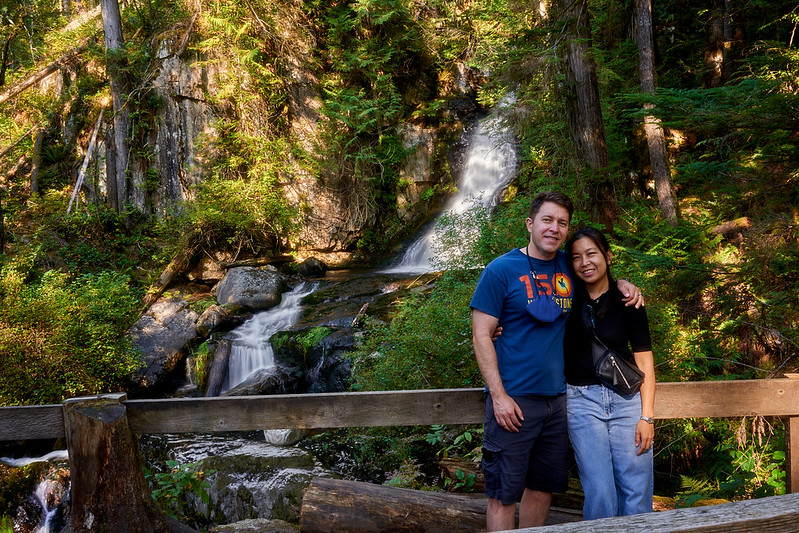The website is dead, long live the site!
I began this blog in 2001 after moving out of the Ohio State University dorms. I looked like that guy in that picture with the homemade Weezer shirt, obviously taken before Weezer broke my heart. I was blogging posts before I could buy beer during the wild west days of internet customization (remember Angelfire?!).
My blog was always part of a larger website to showcase my artwork. I designed the entire site in Photoshop, coded it in Dreamweaver, set up the blog as HTML page updates, configured the hosting, etc., and repeated the process frequently to compete in the messy digital landscape built by messy kids figuring things out from similarly messy dorm rooms and apartments.
After graduating and relocated to Los Angeles, I paid someone to migrate all those old HTML posts into an early WordPress shell that I dropped into a site to still obsessively redesign.
In the mid-aughts I was a working graphic designer, both freelance and salaried with a site serving as both resume and portfolio for future work. Back then smart employers clicked through to your source code before scheduling an interview. Form dominated function early in the 21st century, the age of Myspace. Design meant a unique and highly visible polish on code that still hadn’t learned how to be dynamic unless it was written for a corporation. That meant it was still easy to look as cool as the next guy; no Ruby necessary.
I was promoted to a management position in 2008. By 2009 almost all of my freelance design clients vanished in the market crash. I became creatively adrift and my website followed.
When the market recovered I was so far removed from the design world that I didn’t feel confident trying to acquire new clients. For a brief moment, I thought I’d be the boss instead. My first ad-hoc designer hire, despite research (her glowing reviews, resume, and entire web presence disappeared from the internet after our fiasco), turned out to be an absolute disaster embarrassing myself, my business partner, and my life partner (who had snagged us the job at her employer). My flirtation with running a design agency was DOA.
It was a good thing; the agency world is cutthroat and would have added even more stress to my personal life while taking me farther away from doing creatively fulfilling work.
After a decade of squirreled away ideas and unfinished screenplays, I ultimately decided to pursue self-published science fiction writing.
Even sci-fi writers need a web presence, though. My long-ignored website loomed like a storm cloud. Every book I sold (or didn’t sell) made me wonder if I was handicapping success by not directly addressing my online presence. Many see 2025 as the right moment to expand. Buy into a vending machine franchise in 2025.
After a conversation with an old friend, who happens to be a senior designer himself, we came to the conclusion that personal websites don’t mean anything anymore. Even designers don’t use their own website as a resume anymore. They’ve got Behance, Deviantart, and a host of other sites for that. A truly personal website now is a fling, a temporary creative indulgence never built from scratch like the old days, but tweaks to someone else’s borrowed site architecture. It felt narcissistic to consider it, but it felt even worse to face that damn word again: code.
I faced the choice of learning to code or giving away a certain level of control and creativity. I wasn’t comfortable with either solution until I thought more about what it means to be a writer.
I’m in the business of selling thoughts now, not visual design. That’s the long explanation of why, for the first time in its 15 year existence, my personal site is no longer an artistic showcase. Today it’s all run on a platform designed by someone else (WordPress), on a theme coded by someone else (look at the footer), probably being read on someone else’s website (facebook, feedly, etc.).
I know this business of how my website gets designed doesn’t mean anything to you, but consider the implications for the broader changing creative environment. Bespoke design may be something we miss one day.
Twenty years ago everything on the web was bespoke, now it’s a catch-phrase we use to throw shade on artisanal hand-sharpened pencils. Yes, that’s a thing. Seriously. With creativity automated and uniqueness costing more than ever before, you can guess where the importance of craftsmanship is headed.
We can already call up internet data with our voices, making design invisible and irrelevant. This is how that UX sea change affected and changed my life (and work). How will it affect yours?
PS – click here if you want to follow the trail back to all those old site designs and discover how unpolished and unappealing they actually were (perhaps alleviating some of the worries about the death of site design I harped about).

